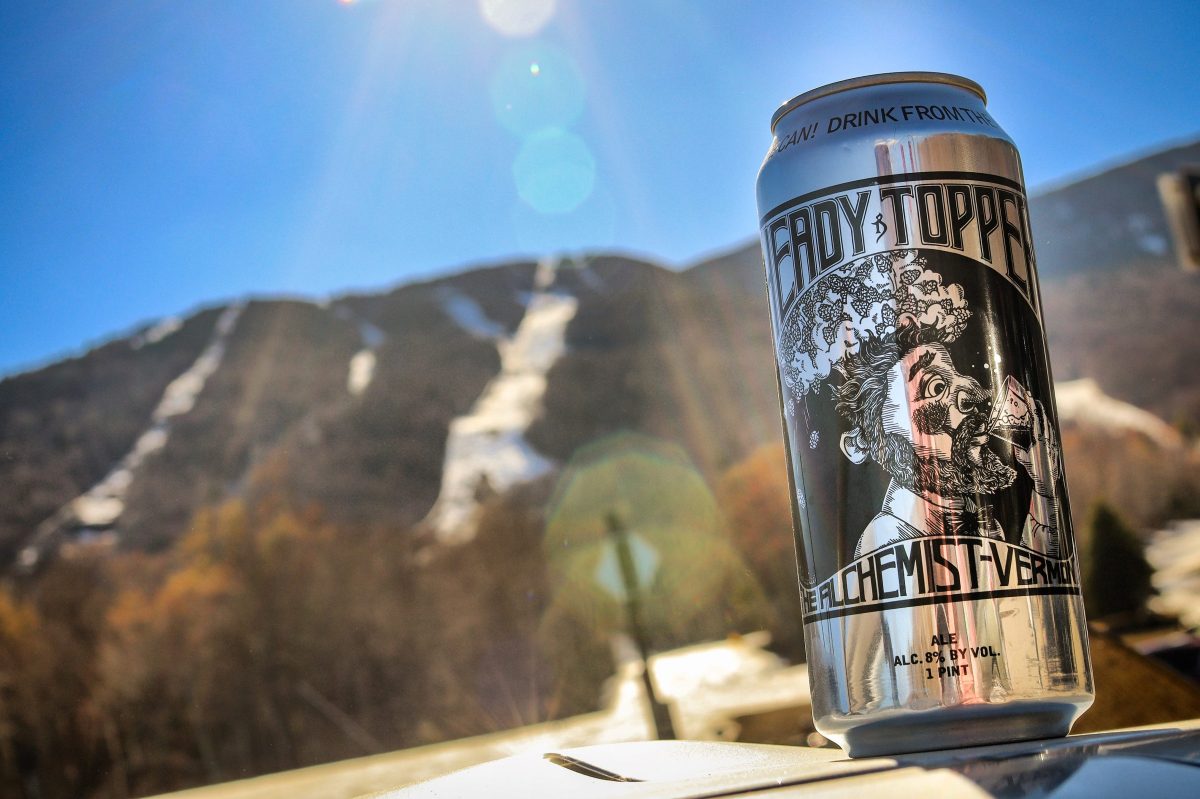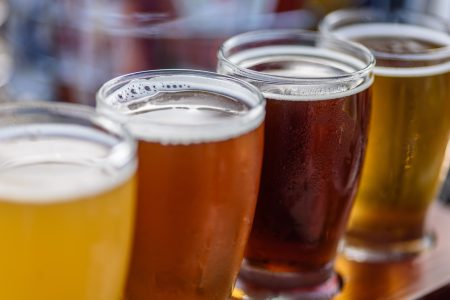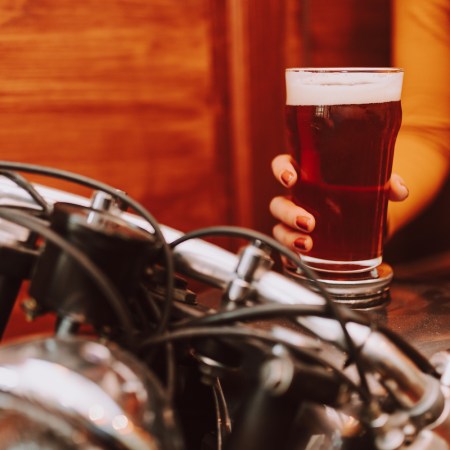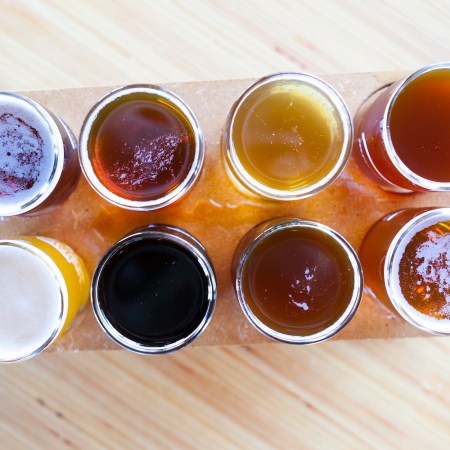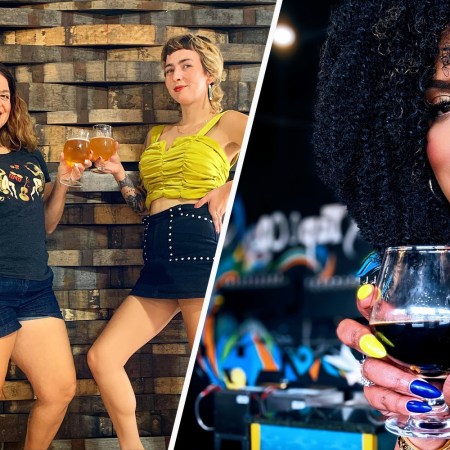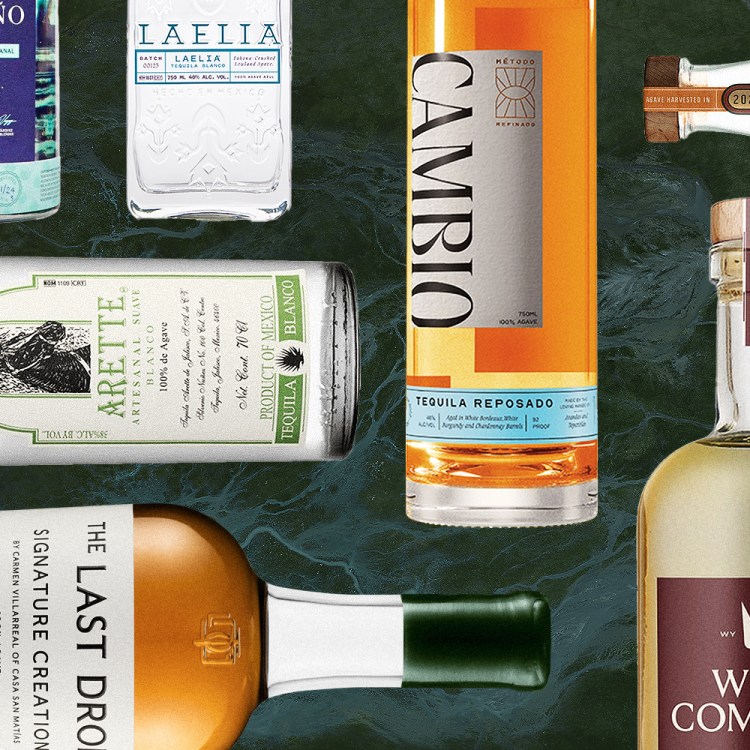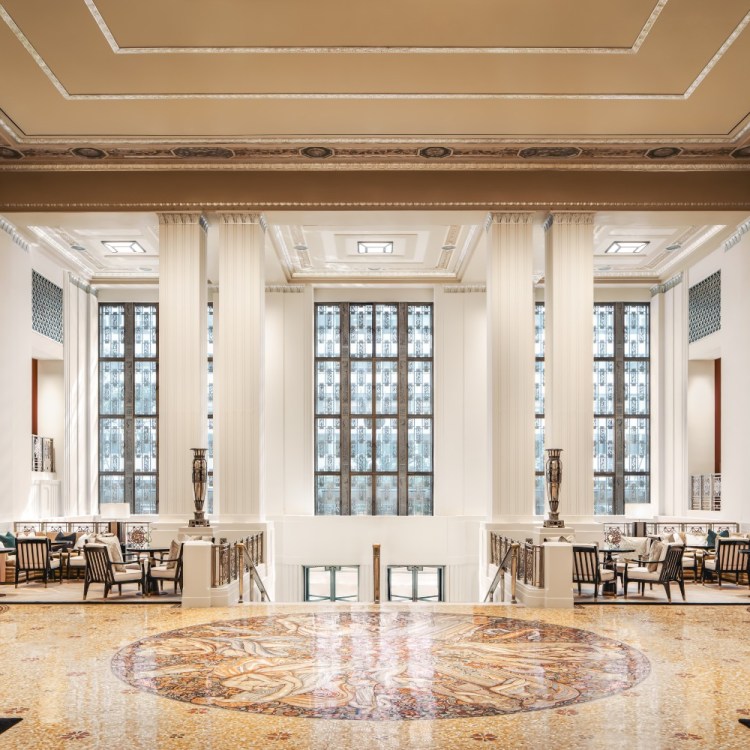In the fall of 2017, I reached the Czech city of Plzeň — home of the Pilsner beer style — to attend the annual Sun in the Glass beer festival at the Purkmistr Brewery on the outskirts. To my shock and awe, “Vermont-style IPA” and “Vermont IPAs” appeared on the draft lists of several of the more than 30 participating breweries. The appearance marked one giant leap for Vermont-kind, after nearly all previous mentions of my home state in my 15 years of expathood garnered either a Scooby-Doo “huh” or a weird comment about vermouth.
Slapping my Vermont driver’s license on the counter on the festival’s kiosk counters, I ordered pints of the lot to see how the Green Mountains were being expressed in Central European beers. The hazy, punchy, bitter taste quickly provided a quick answer — the double IPA.
It was a powerful testament to mindboggling fame generated by the Vermont brewers in the early 21st century, most manifest in the double IPA, or DIPA, style. It remains a leading fixture of the Vermont beerscape today, but like any organic product, it continues to grow and change under a prodigious number of passionate and experimental craft brewers in what many call “the Napa Valley of beer.”
But is there too much of a good thing? Ask Vermont brewers — and DIPA drinker — and you’ll find a multitude of perspectives and flares of contention.
What is a DIPA?
“A double IPA to me is an IPA between 8% and 10%,” says John Kimmich, co-owner and head brewer of the Alchemist Brewery and inventor of the Heady Topper — the beer that launched the global DIPA wave. The alcohol content is perhaps also the only point where all brewers find agreement, and it’s backed by Brewers Association guidelines. Beyond that, the definition becomes hazier, pun intended.
Generally, a DIPA carries a hazy body, hop-forward flavor, flowery aromas and a robust, palate-popping flavor that can stop first-timers in their tracks. However, the immense variation in all of these challenges the best of classifiers. There’s even some discrepancy in the official Brewers Association guidelines, which, as of 2022, contain two separate entries under the DIPA umbrella: “American-Style Imperial” and “Juicy or Hazy Imperial.” It’s the latter form that’s become most associated with the “New England-style IPAs” — or now, Vermont-style IPA.
Historically, the DIPA evolved from the India Pale Ale, aka IPA, which goes back to the 19th century and British colonization of India. Larger doses of hops and higher alcohol levels were found to preserve the beer better for the voyage, and a new style was born. The DIPA essentially turned up the hops and alcohol even more, and then brewers took it from there, following wit and whimsy in new directions, not always to the approval of all.
What’s the Best State for Beer Lovers?
Hint: it’s been spooning New Hampshire for decadesHow did it become a Vermont thing?
Vermont did not invent the DIPA. That honor goes to California brewer Vinnie Cilurzo, who brewed the first DIPA in 1994 before going on to found the Russian River Brewing Company, which released Pliny the Elder DIPA in 1999, perhaps the first of the new style to raise brewers’ eyebrows.
Nevertheless, the DIPA remained largely verboten in the brewing mainstream, particularly due to a hazy body that eliminated it from beer competitions at a glance for many years. “In the early years, I would enter Heady [Topper] into the Great American Beer Festival, and it would get thrown right out,” noted Kimmich. “It tastes great, smells great, but it’s hazy, and it would just get chucked out.”
It took a simple twist of fate and force of nature to change everything. As Hurricane Irene barreled through Vermont in late August 2011, it destroyed Kimmich’s Alchemist Pub & Brewery in Waterbury. The only thing that remained of his business was a new cannery on higher ground in another part of town. “If this wasn’t open right now, we’d be out of work looking for jobs,” he told the Waterbury Record in the immediate aftermath.
Remarkably, initially in the spirit of It’s a Wonderful Life, the cannery parking lot began to fill daily with locals buying Kimmich’s signature beer, the Heady Topper, now in tallboy cans for the first time. They were quickly followed by thousands more, thanks to the new portability brought by canning, rave reviews in beer publications like Beer Advocate and RateBeer.com, and good old-fashioned word — and taste — of mouth. Indeed, within a few years, newspapers like the Boston Globe, Washington Post, and other national publications were reporting on the long lines outside Vermont liquor stores, bars and the cannery. Arrests were even made on black market sales.
The success of Heady Topper fixed Vermont at the center of the global beer map, turbo-boosting the local industry. From 2011 to 2021, the number of breweries in the state exploded from 20 to 74, giving Vermont the title of most breweries per capita. It also made the DIPA style as integral to the Vermont beer scene as maple syrup to the pancake — well, almost.
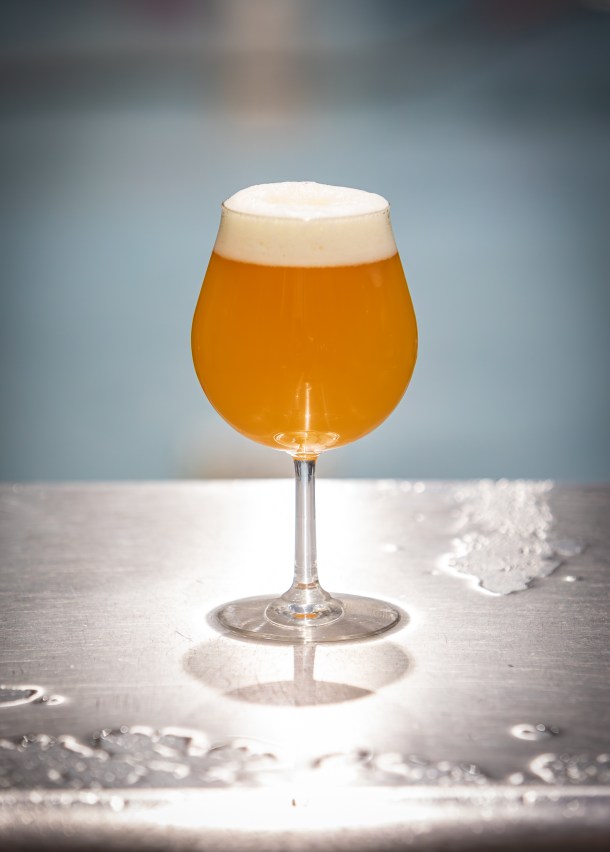
DIPA 3.0
“Where fermentation meets imagination,” reads the slogan of Burlington Beer Company, which opened its brewery in 2014 and a now popular taproom in 2021 inside a former turn-of-the-20th-century factory of the Lumiere Brothers, the first filmmakers in history. A quick scan of the DIPAs on the menu — the largest section — proves the point. Playful titles like Martian Dawn, Totemic Might and Castle in the Clouds promise flavors of lemongrass, blueberry muffins, pine sap, dank cannabis and even snozzberries. Many also include nontraditional ingredients, such as the Beekeeper, which promises “an absolutely absurd quantity of Vermont Honey.”
For brewer and owner Joe Lemnah, this version of the DIPA represents the dominant strain in Vermont and what’s expected by many looking for — and brewing abroad — Vermont-style IPA. This follows Lemnah’s experience, too. His first releases, he recalls, were styles he didn’t see in the market and included a table saison and multigrain golden ale. “But then the market was like, ‘Why don’t you do a double IPA?’” he says. He began shifting more in that direction, creating some of the haziest and juiciest DIPAs now in the state.
In an industry featuring the word “craft” in the title, it’s no surprise that this approach does not align with the perspectives and philosophies of all Vermont brewers, and at moments, sparks flares of contention, albeit good-naturedly. Nevertheless, Lemnah pays open tribute to the three OGs of Vermont craft brewing: John Kimmich at Alchemist, Shaun Hill of Hill Farmstead and Sean Lawson of Lawson’s Finest Liquids — and through them, the godfather and progenitor of all Vermont craft beer, Greg Noonan.
The softer mouthfeel of juicy, hazy DIPAs marks another distinction — of Vermont-style DIPAs that connects to the brews of Shaun Hill, who was inspired by the recipes he saw in Denmark, which contained higher levels of calcium chloride than usual. “I sent an email to Greg Noonan…I was like, ‘Greg, every recipe here just has chloride, there’s like no sulfate. And he’s like, ‘Oh, that’s weird. I guess they must really be trying to enhance the roundness and the mouthfeel of the beer.’ And that was the lightbulb moment,” Hill explains. He also added oats, creating “a sort of fluffy roundness,” as well. The immense success that followed for the brewery inspired more experimentation in this direction.
That approach stands in stark contrast to the Heady Topper and the philosophy of Kimmich, who says, “There are crazy things going on, people were putting applesauce into the kettle to throw pectin haze to a beer. They still use oats and wheat, and all these shit ingredients and an IPA to make it hazy and to make it silky and soft.” Hill notes the difference, too, saying about his friend Kimmich, “He likes a little more traction on the tongue.”
So, there’s perhaps some bitter irony that the style made so popular worldwide by Heady Topper tastes less and less like it. Nevertheless, Kimmich accepts the situation. “It is what it is,” he says. “People want to innovate and they want to take it in different directions. And that’s fine.” For Hill, it comes down to simple question: “At the end of the day, is the beer delicious? Is it a good beer? that’s all that really matters fundamentally.”
“It’s just beer at the end of the day; let’s have fun,” adds Lemnah. “We’re not curing cancer. We’re just curing today.”
The Future of DIPA
Considering how much the double IPA has changed in the 12 years since Heady Topper left the cannery, where it will go in next dozen remains an open question.
“People’s palates change,” notes Hill. “And everything is a reaction to what came before. I would not be surprised if 2033 versions of double IPA are back to where Pliny the Elder and Pliny the Younger left off.” In fact, he sees it happening already in new releases of West Coast double IPAs, as well as a growing affinity for clean lagers and Czech styles. “I think that if they like beer, they’re curious, and they’ll explore, but that they end up back at…something that’s a little more clean and precise on their palate, than all these sort of like muddled, confusing flavors.”
Kimmich agrees, with passion. “There comes a point where it’s not about innovation,” he says. “When you go to a world class pizza restaurant that has been existence for 100 years, they’re not going to blow you away with, ‘Hey, we have a feta, kimchi pizza.’ No, give me your fucking cheese pizza, and it is going to blow your fucking socks off.”
DIPA trends are also being influenced by the pandemic, according to Lebnam. “People were drinking, especially in COVID, more heavily and now, coming out of it, I think people are becoming a little more conscientious of consumption,” he says. He sees this in his sales data, too, noting the ongoing dichotomy between take-away sales at the shop and drafts poured in at the taproom. While high-ABV DIPAs still sell well in take-home sales, easier drinking, less alcoholic session beers do better at the bar.
The DIPA name itself is also coming into discussion, with some raising concern over the colonization of India that resulted in the moniker. (This is also reflected in the word “imperial,” too.) “Can we just abandon the word India from the definition?” asks Hill. “Can IPA itself stand for a style without becoming an acronym for something else?”
Perhaps there’s an answer in another Hill Farmstead brew, “Three Magic Letters.” “Ultimately, you don’t need to call something an India Pale Ale,” he explains. “You just call it an IPA.”
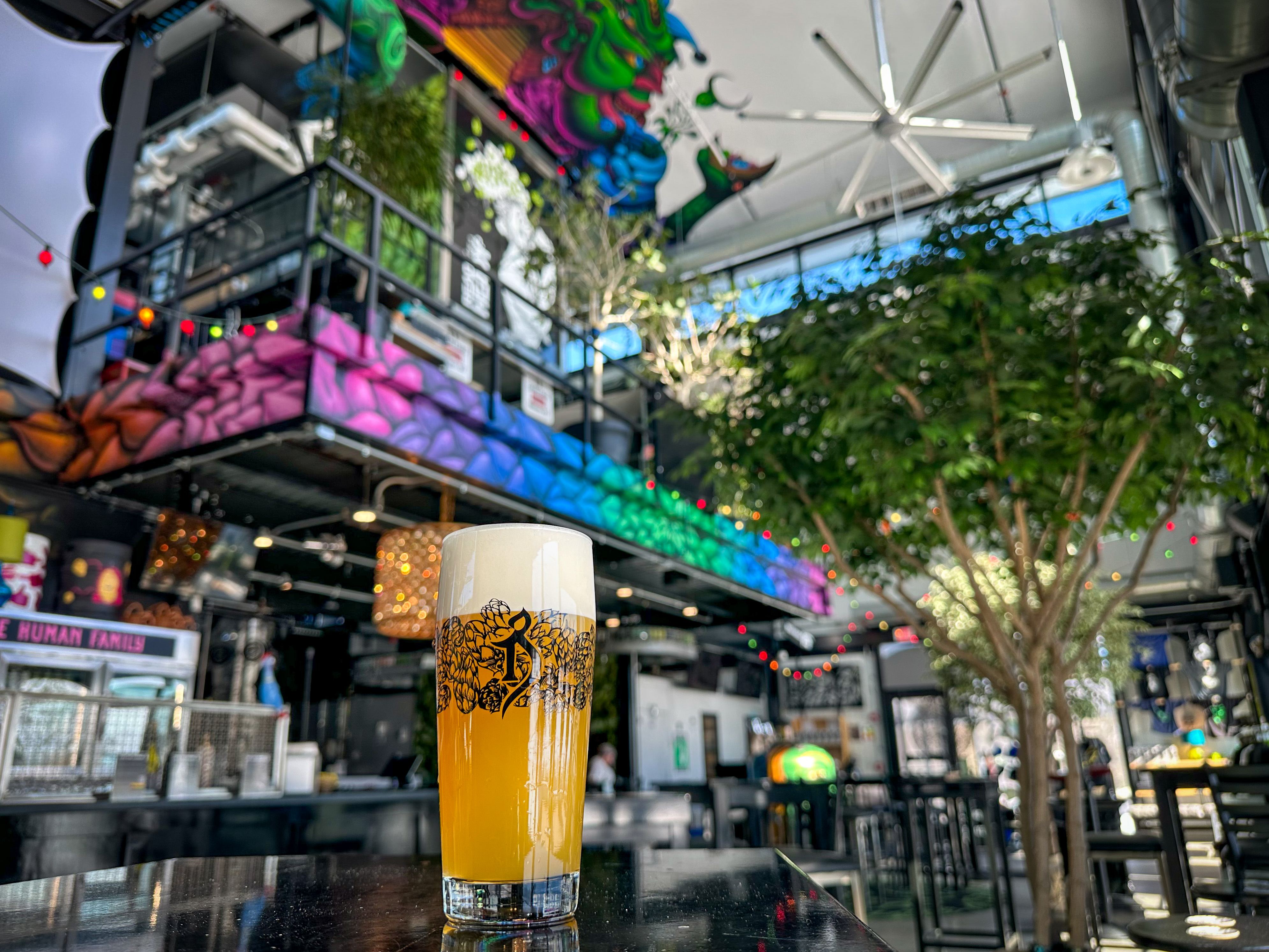
Essential Vermont breweries making DIPAs
Few breweries anywhere can compete with the handsomeness this turn-of-the-20th-century former factory of the famed Lumiere Brothers. Hazy, juicy DIPAs dominate the taps, with more than a dozen varieties available (alongside a solid food menu). Playfulness is a virtue here.
As the birthplace of the Heady Topper, the Alchemist retains a legendary status worldwide. Its brewery has become a centerpiece of Stowe and the graphic-heavy interior calls to mind the memories and fun of Willy Wonka. The bar is also the only place you can taste a cask-pulled Heady Topper.
It many ways, Hill Farmstead represents the ultimate Vermont beer pilgrimage. Set in the most rural part of one of the most rural states, the brewery in Greensboro requires traveling along dirt roads through thick forest to reach. But it’s worth the trip for the brews and views.
Another of the Vermont craft beer OGs, Sean Lawson won fame with his “Sip of Sunshine,” and the success that led to large and handsome Viking hall-like taproom in the heart of the Mad River Valley, one of Vermont’s prettiest natural landscapes.
These brewers combined their passion for beer and coffee at this spacious taproom and coffeeshop in South Royalton. Inside, you’ll also find some intriguing experimentation. Among the already vaunted DIPAs are Triple Dry Hopped DIPA and Black DIPA, among others.
Honorable mentions
To sample a range of the best Vermont DIPAs, pull up a stool at Three Penny Taproom in Montpelier. The bar remains the local go-to for serious beer fans, thanks to the impressive curation of the draft list. You’ll even find limited releases brought in directly from local brewers.
For take-home DIPAs, stop by this craft beer shop in Waterbury, just across the road from the former Alchemist Pub (now Prohibition Pig — and worth a stop for its own beer). The shelves and coolers are well-stocked with Vermont beers, including the pick of the Vermont DIPA litter.
Every Thursday, our resident experts see to it that you’re up to date on the latest from the world of drinks. Trend reports, bottle reviews, cocktail recipes and more. Sign up for THE SPILL now.
